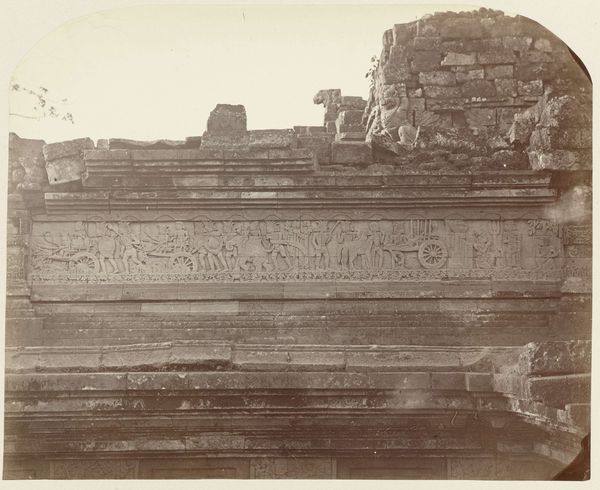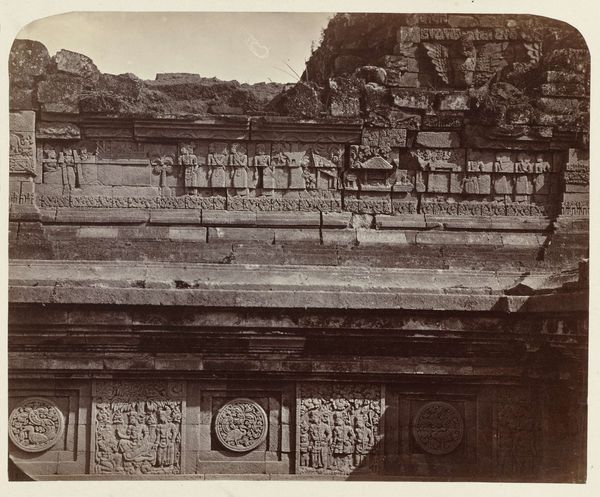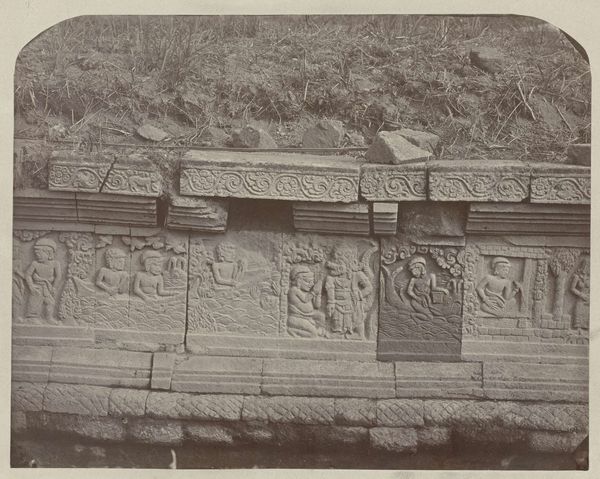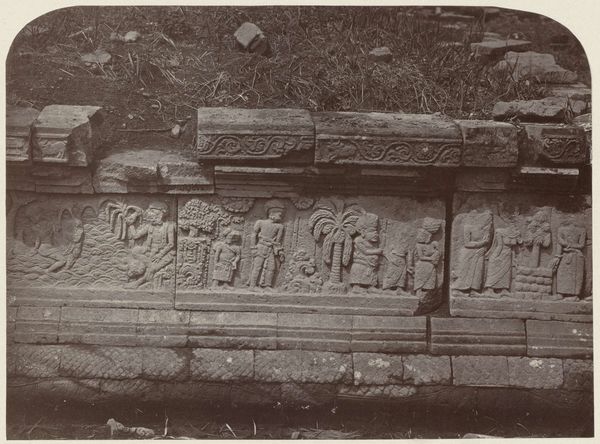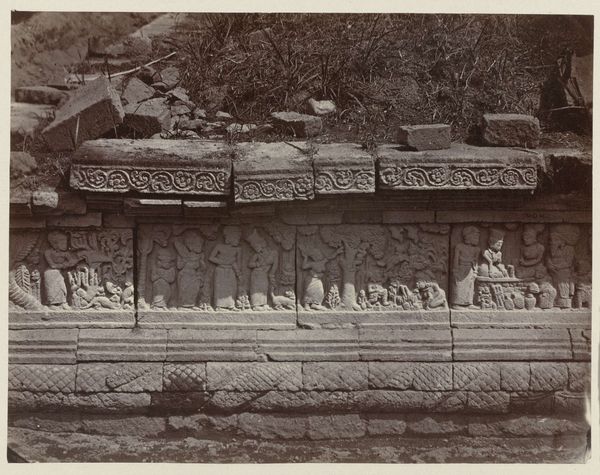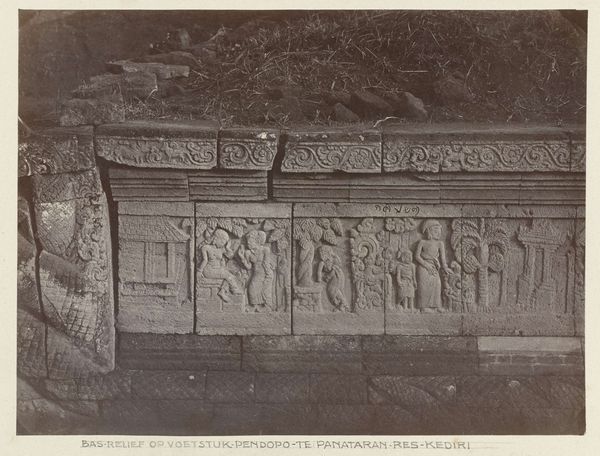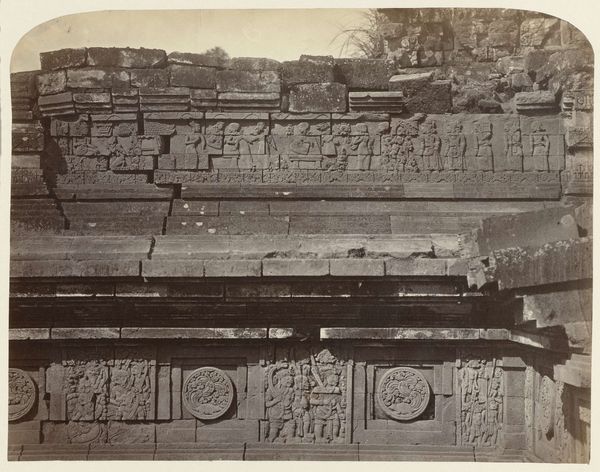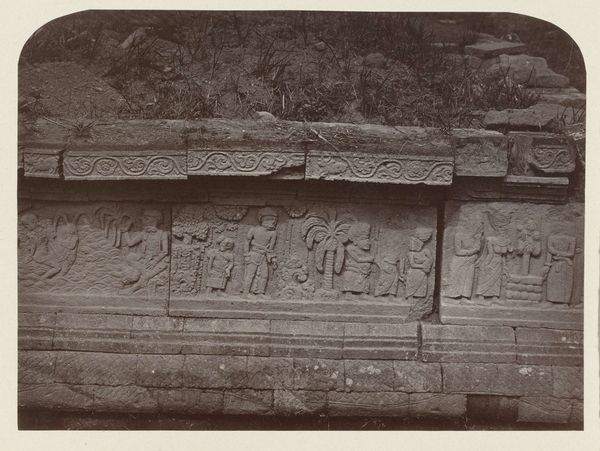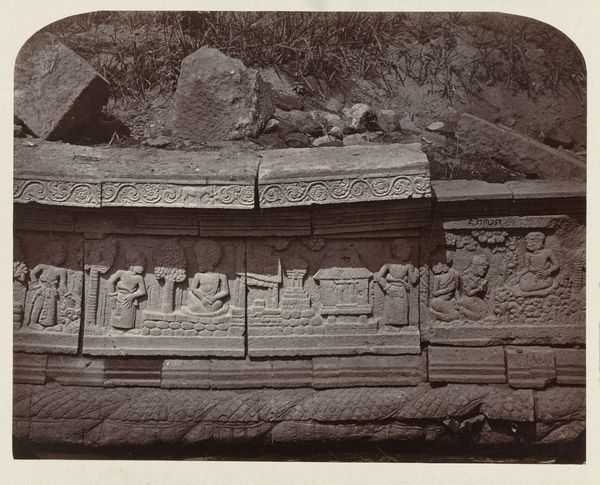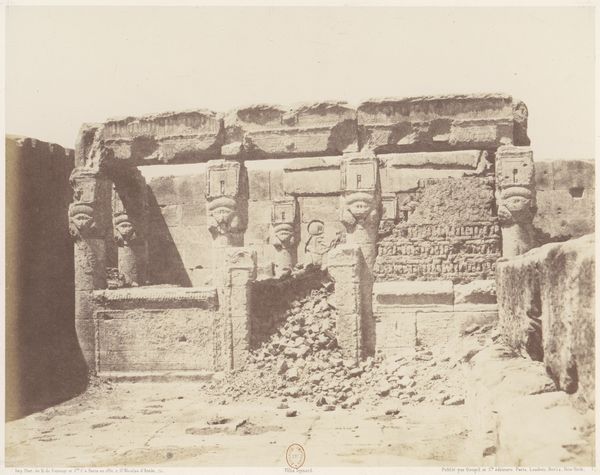
Candi Panataran (temple Complex), Main Temple; Krishnayana relief no. 21 (the final battle in which Krishna is victorious), second narrative register, west side. Panataran, Blitar district, East Java province, 1323-1347 AD, Indonesia Possibly 1867
0:00
0:00
carving, relief, photography, gelatin-silver-print
#
carving
#
narrative-art
#
asian-art
#
relief
#
landscape
#
photography
#
carved into stone
#
ancient-mediterranean
#
gelatin-silver-print
#
19th century
#
history-painting
#
statue
Dimensions: height 252 mm, width 325 mm
Copyright: Rijks Museum: Open Domain
Editor: We're looking at a photograph by Isidore Kinsbergen, possibly from 1867, depicting a relief carving at the Panataran Temple complex in East Java. The carving tells a story from the Krishnayana, specifically the final battle. It's incredible how much detail is captured, even in this old gelatin silver print. There's a palpable sense of chaos and movement despite it being static stone. What strikes you most about this image? Curator: Well, for me, the photo whispers stories. It transports me not just to a temple in Java, but to a moment caught between then and now. Kinsbergen, the photographer, is framing another artist’s narrative, adding his own layer to the tale, centuries later! The relief itself is a flurry of characters frozen in heroic action. The narrative spills across the register with the rhythmic dance of the carved figures. What do you make of how time impacts the understanding of such pieces? Editor: That's beautifully put, the idea of multiple narratives intertwined. Thinking about time, I guess what interests me is how its endurance affects our reading of the image itself, we fill in the gaps of history and perhaps it shapes and directs what the artist meant to convey? Curator: Exactly! Consider that the gelatin-silver print, a relatively new medium in Kinsbergen's time, freezes the image in a particular state of decay of a carving from the 14th century, which portrays a mythological narrative far older than even the temple itself! So what are we actually seeing? Do you suppose, in that case, that something is gained and lost as cultures shift through the ages? Editor: Definitely. Some nuances might be lost to time, but the core narrative of conflict and triumph still resonates. Seeing this image connects us to that history, sparking new interpretations for a modern audience. I appreciate that contrast, it gives a certain gravitas to the art itself! Curator: Indeed! Perhaps the point, for me, is that this echoes life: the endless story-telling across millennia, that binds humanity in some strange, magnificent way. Thank you for those illuminating thoughts!
Comments
No comments
Be the first to comment and join the conversation on the ultimate creative platform.

